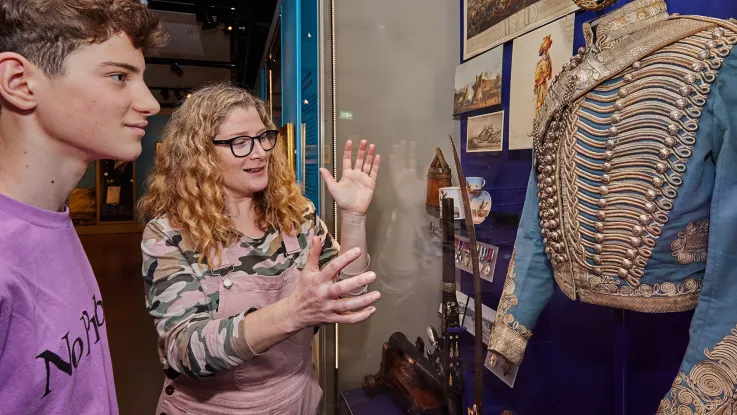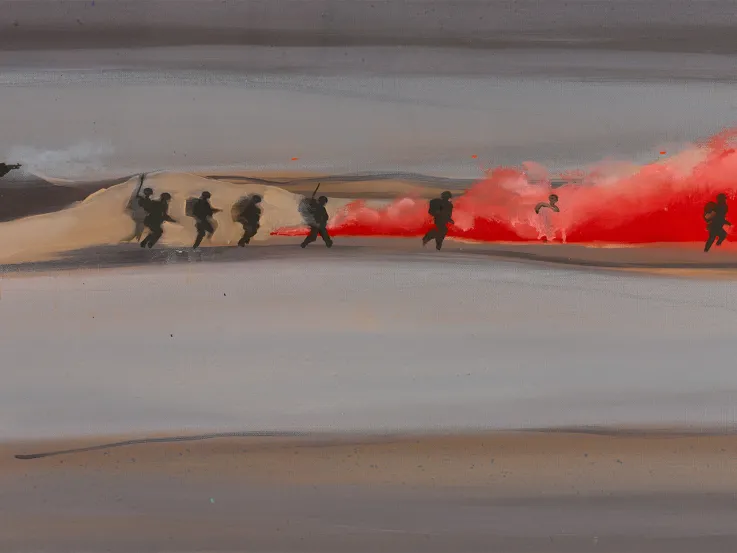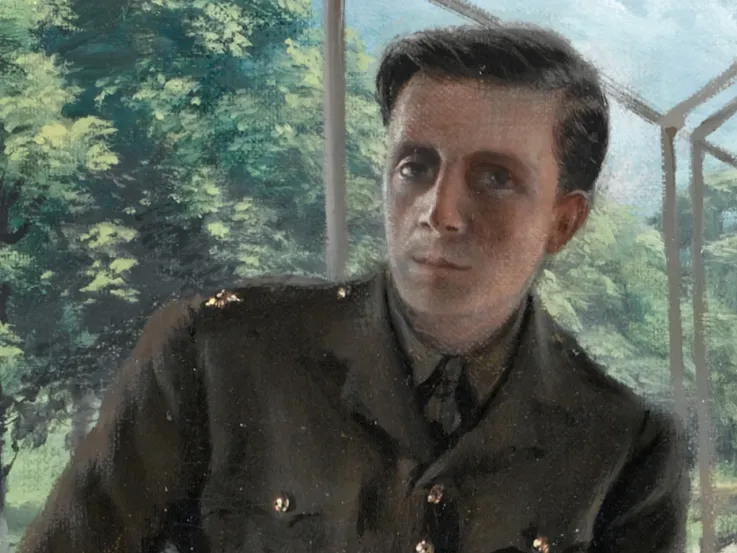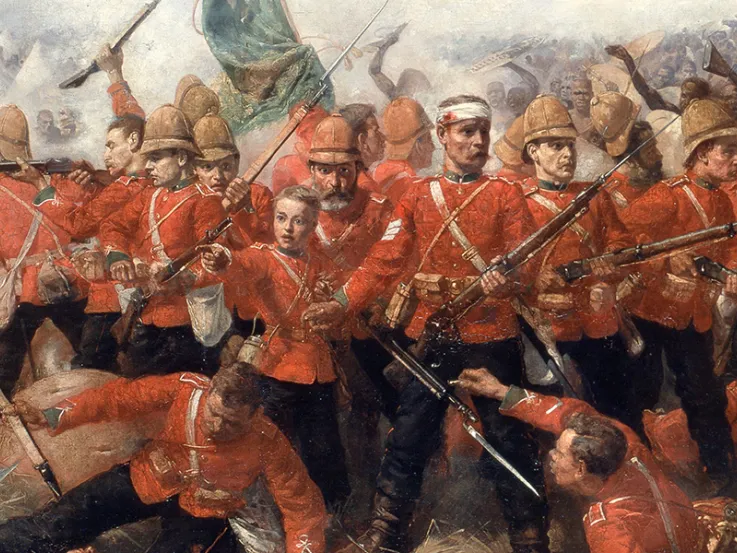Explore more from Army in Art
Inside Mastiff 33A (‘Withdrawing, We Don’t Retreat’), February 2010
2 minute read
The bigger picture
In late 2001, Britain joined an international military coalition that invaded Afghanistan and quickly toppled the ruling Taleban regime, which had been harbouring the architects of the '9/11' terrorist attacks. Combat operations against Taleban insurgents, and other Islamist groups, continued until 2014.
From 2006, British forces were concentrated in the southern province of Helmand. Operations there were far more intense than expected, with soldiers drawn into heavy firefights in towns like Musa Qala and Sangin. British fatalities peaked in 2009 and 2010, with both years seeing more than a hundred deaths.
An unseen enemy
Over 450 British servicemen and women lost their lives during the war in Afghanistan. Almost half of these were the result of improvised explosive devices (IEDs). Made from a variety of everyday materials, IEDs were easy to build and hard to detect. They were particularly deadly to soldiers on foot patrol and transport convoys.
The Mastiff was the latest in a range of armoured patrol vehicles used in Afghanistan. Introduced in 2007, it was designed to resist landmines and improvised munitions. Despite the Mastiff's reputation for safety, three British soldiers died after their vehicle was hit by a particularly large roadside bomb in Helmand in 2013.
See it on display
Come and see this painting in our Global Role gallery, displayed alongside other items that reveal soldiers' experiences of conflict around the world.






